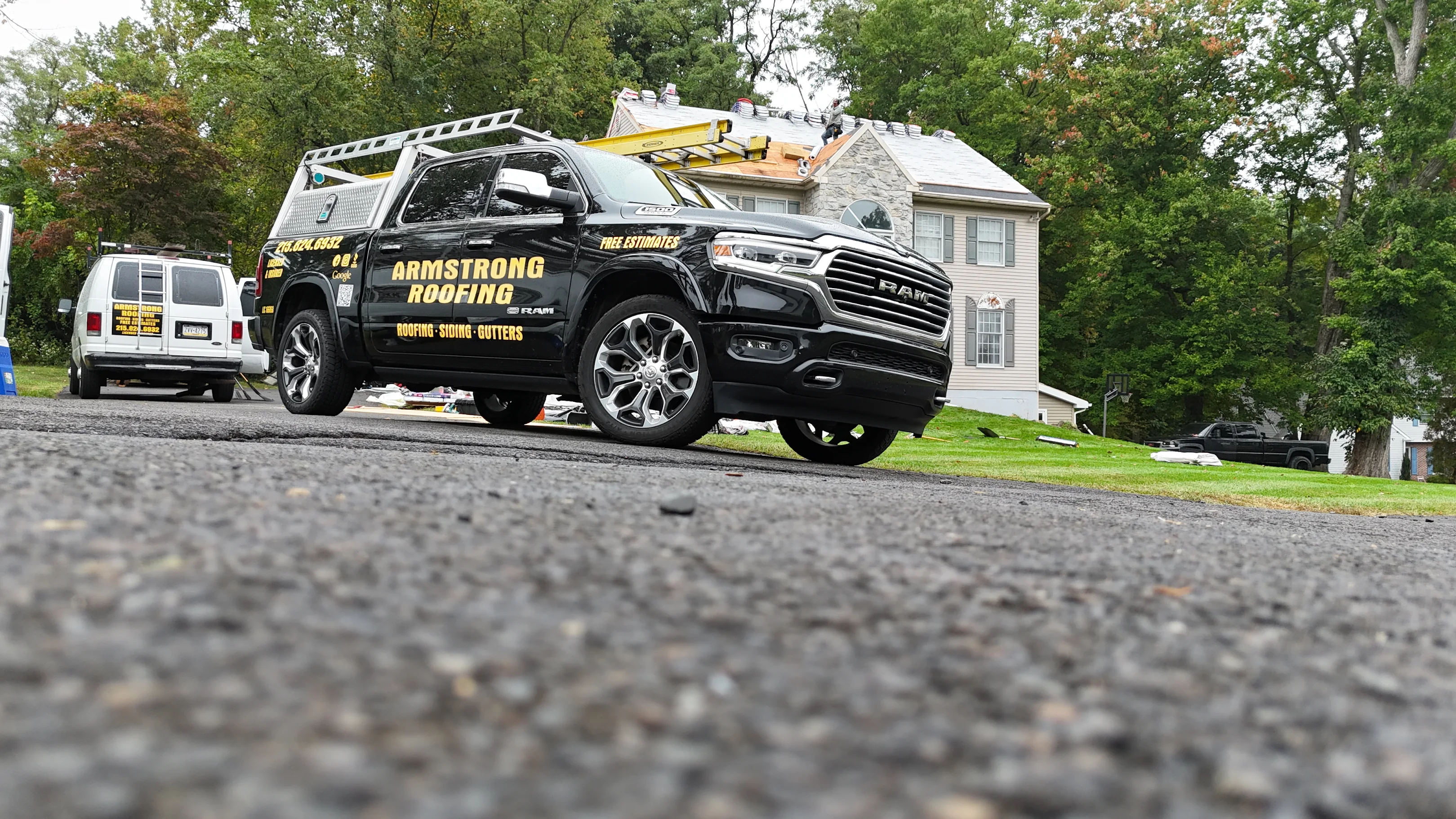Experiencing roof damage in Maple Glen, PA can be stressful, especially when severe weather strikes unexpectedly. Filing an insurance claim may seem overwhelming if you’re unfamiliar with the process. This guide will walk you through every step of filing a roof damage claim with your insurance company, helping you understand your policy, document damage effectively, work with adjusters, and overcome common challenges. By taking the right actions promptly, you can protect your home and increase the chances of a successful claim.
Understanding Your Homeowners Insurance Policy
Before filing a claim, it’s essential to have a clear understanding of your homeowners insurance policy. This legal document outlines what types of roof damage are covered, coverage limits, exclusions, and your rights as a policyholder under Pennsylvania insurance regulations.
Most standard policies cover damage caused by storms, hail, wind, and other sudden events, but they typically exclude wear and tear or maintenance-related issues. Review your policy thoroughly to check:
- Coverage limits for roof repair or replacement Specific exclusions such as neglect or gradual deterioration Deductible amounts you are responsible for paying Any endorsements or riders that expand or restrict coverage
Understanding these details empowers you to set realistic expectations and determine if your claim is valid based on your specific coverage.
Steps to Take Immediately After Roof Damage
After discovering roof damage, acting swiftly can make a significant difference in the success of your claim. Immediate steps include ensuring safety, preventing further damage, and collecting evidence.
Documenting Damage
Thorough documentation is critical. Take clear, detailed photographs and videos of all visible damage https://www.storeboard.com/blogs/affiliate-marketing/best-hotels-in-maple-glen-pa-–-top-stays-for-every-traveler-in-2025/6233229 from multiple angles. Capture damaged shingles, leaks, gutters, and inside areas affected by water intrusion.
Additionally, gather contractor estimates or repair invoices if you’ve had professionals assess preliminary damage. Keep copies of any emergency repairs you initiate, such as tarping or boarding up damaged sections, as some insurers require proof of efforts taken to mitigate damage.
Here’s a checklist to help you document effectively:
- Photograph roof damage from ground and roof level if safe Record video walkthroughs describing damages Save all contractor estimates and repair quotes Keep receipts of temporary emergency repairs Note dates and times when damage was discovered and reported
Filing Your Insurance Claim
Once you have documented your roof damage, it’s time to file your claim with your insurance company. Most companies allow claims to be submitted online, over the phone, or via mail. Select the method most comfortable for you, but ensure accuracy and completeness in your application.
Provide detailed information about the incident, including the date of damage, description of what happened, and attach all supporting documents—photos, videos, and contractor estimates. Be honest and precise to avoid delays caused by discrepancies.
Working with a Claim Adjuster
After submitting your claim, your insurance company will likely send a claim adjuster to inspect the roof damage in person. The adjuster’s role is to evaluate the extent of damage and determine the amount of compensation based on policy terms.
When the adjuster visits:
- Be present during the inspection to point out damages and answer questions Show your documentation and contractor assessments Ask about the expected timeline for claim processing Take notes or record conversations for your records
Negotiations might follow if there are disagreements on the settlement offer. Stay calm, provide additional proof if necessary, and consider seeking professional advice if you feel the settlement is unfair.
Navigating Common Challenges
Insurance claims for roof damage sometimes encounter obstacles such as claim denials, disputes over damage cause, or issues with deductibles. If your claim is denied:
- Request a detailed explanation in writing Review your policy again to confirm coverage Gather more evidence or seek a second opinion from a roofing expert File an appeal or request a re-inspection
Negotiation strategies include documenting all communications, knowing your policy rights, and being persistent. Remember, deductibles usually apply, so factor those costs into your expectations.
When to Seek Professional Help
If your claim process becomes complex or you face denial, hiring a public adjuster or consulting legal professionals can be beneficial. Public adjusters work independently from insurance companies and advocate on your behalf to maximize settlement offers.

Consider professional help when:
- Claims are denied without clear reasoning The settlement offer doesn’t cover repair costs adequately You feel overwhelmed by documentation or negotiation processes Legal interpretation of policy language is required
Engaging experts early can save time, reduce stress, and improve the likelihood of receiving fair compensation.
Frequently Asked Questions
What should I do if my claim is denied?
Review the denial letter carefully, gather additional evidence of damage, and consider appealing the decision. Professional assistance can improve your chances of overturning denials.
How long do insurance claims typically take in Pennsylvania?
The timeline varies but generally ranges from a few weeks to several months depending on damage severity, documentation, and insurer responsiveness.
Can I file a claim for minor roof damage?
Yes, but consider the deductible cost compared to repair expenses. Sometimes, paying out-of-pocket for minor damage is more cost-effective to avoid premium increases.
In summary, filing a roof damage claim in Maple Glen, PA involves understanding your insurance coverage, promptly documenting damage, accurately submitting your claim, cooperating with adjusters, and knowing how to tackle challenges or seek expert help. Taking decisive and informed steps protects your home and ensures you receive the support you deserve after a storm.
If you’ve recently experienced roof damage, start by reviewing your policy and documenting all damage carefully. Then, file your claim confidently knowing you have the tools and knowledge to navigate the process smoothly. Don’t hesitate to reach out to professionals if needed to safeguard your home investment fully. Your roof is your home’s first line of defense—make sure it gets the care it requires.